Portuguese name: Conjunto Megalítico de Barreira, or Menires de Barreira
Barreira Megalithic Complex
Standing on the hilltop, surrounded by tall trees and lush undergrowth, you are surrounded by a tumbled abundance of giant stones, some standing brightly in the sunshine, with others covered in moss and/or ivy. To the east, you can see the Sintra hills, topped with the fairy-tale Pena Palace. To the west, the magnificent Mafra Palace shines in the sun. The peaceful quiet of the hilltop allows you to turn from the stones, to these more modern wonders, and contemplate the vastness of time.
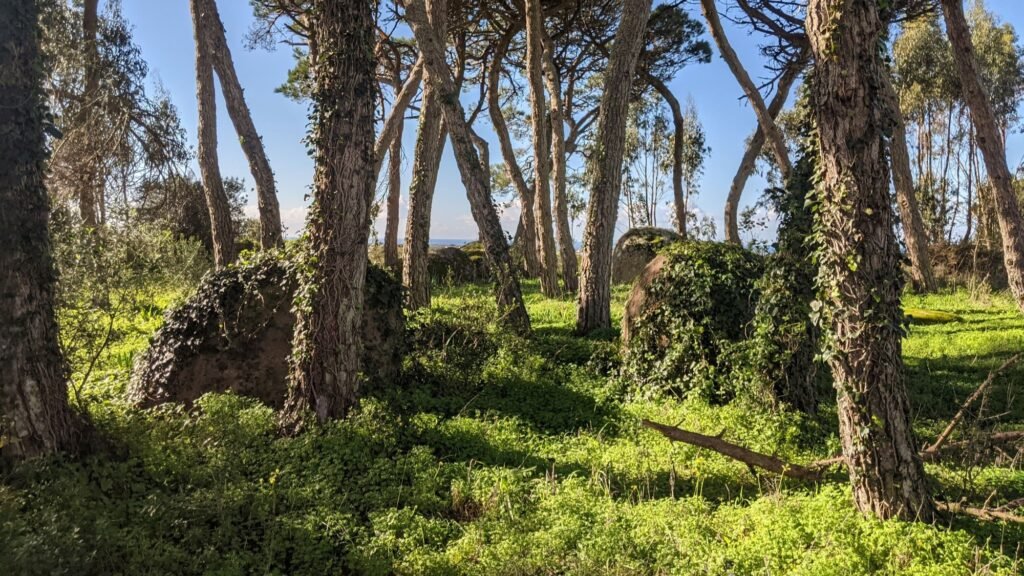



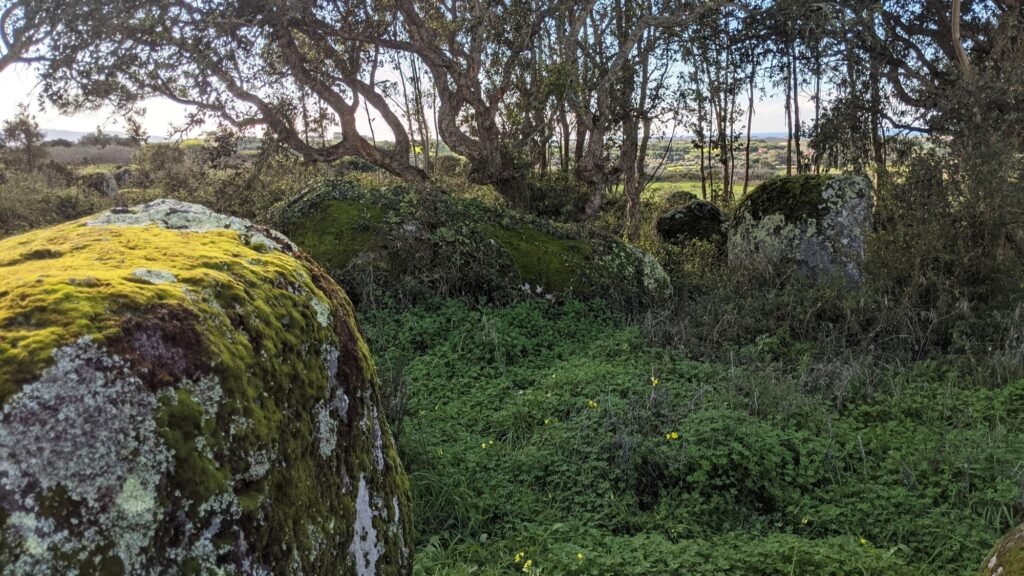
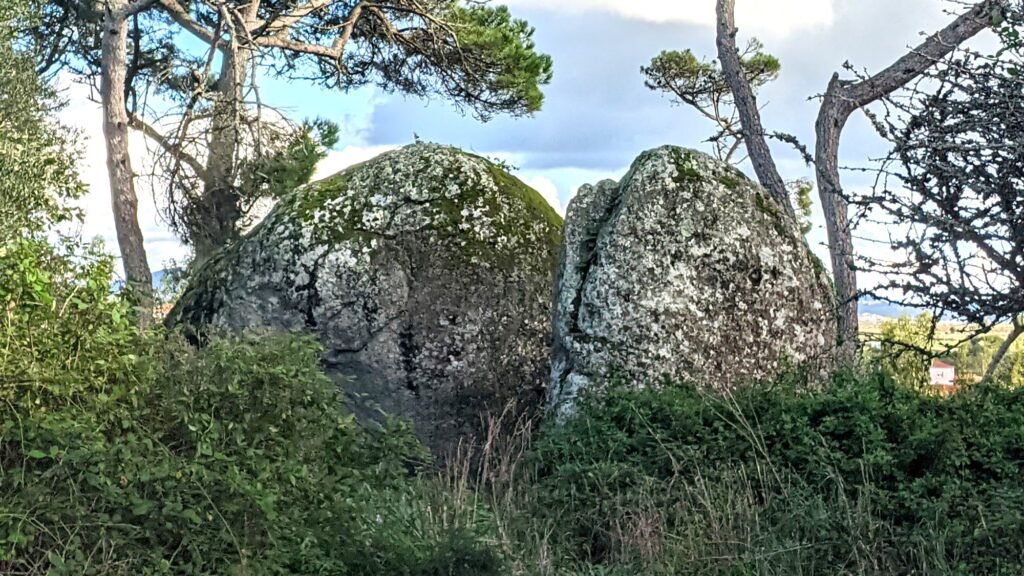

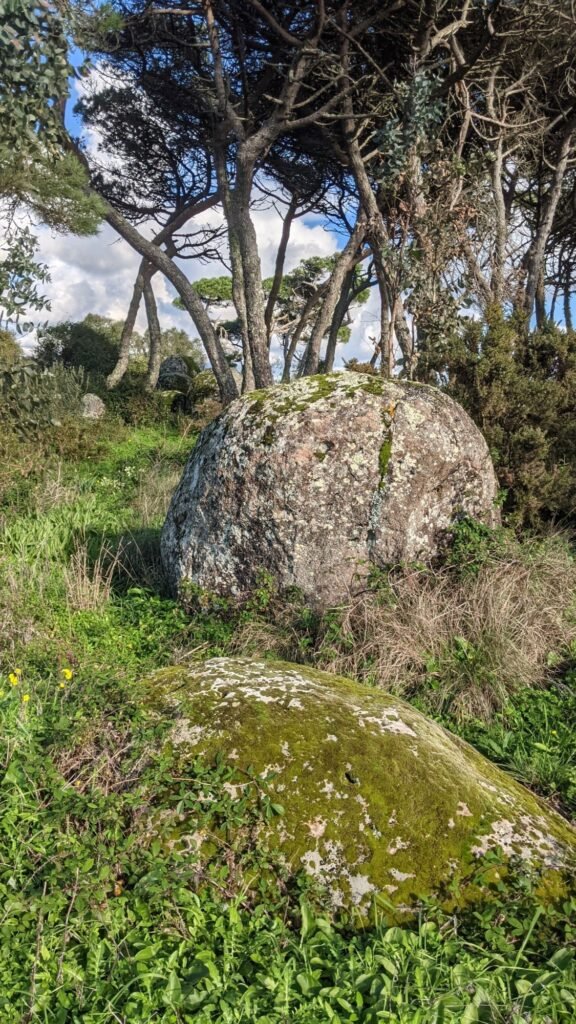
Discovered in 1961 and designated a site of public interest only in 1993, this megalithic site has had a rough history, with stones being removed many times in recent past despite archaeological studies. The irregular shape of the complex leads one to wonder how many of the stones were intentionally placed, and how many were just naturally located here. There are some circular arrangements, some stones that seem to have been definitely shaped and stood upright, but others that appear to have been left alone. Some archaeologists dispute that this is a constructed site at all. Some prehistoric artefacts have been found in the area (not immediately beside or under the menhirs), so it likely was used by people in Neolithic times, but did they construct some or all of it? We won’t know until it has been properly investigated.
Location
The site is in the Lisbon district, in the municipality of Sintra. Barreira is a small village north of Sintra, along the road that leads to Ericeira.
Coordinates (for the entry gate): 38.889529, -9.370333
Access
The complex sits on a small hilltop, overlooking the road. There is a well-trodden path up the hill from the road, with a gate across the path. You can pass through the gate (please re-close it) and climb up. The only difficulty is the undergrowth (there are a fair bit of brambles).
Signage
There is no signpost for the complex. On the N247 (running from Sintra to Ericeira), there are road signs pointing to Barreira (& Funchal). You can easily see the hill (covered with trees) from the N247.
Links
- Article (in English) from Wikipedia
- Description (in Portuguese) from Archeologist’s Portal of the Directorate-General of Cultural Heritage
- Listing as a site of public interest (in Portuguese) in SIPA (System of Information for Archeo-tectonic Heritage)
- Entry (in English) in the UK’s Megalithic Portal
- Details (in Portuguese) in the database of the Directorate-General of Cultural Heritage
Nearby
The site is just up the road from MASMO, the Archaeological Museum of São Miguel de Odrinhas. Further away, at the peaks of the Sintra hills, the Anta de Adrenunes exhibits a similar mixture of natural stone formation with human-placed and shaped rocks. The Tholos do Monge is also in the Sintra hills, and is definitely a constructed prehistoric site.
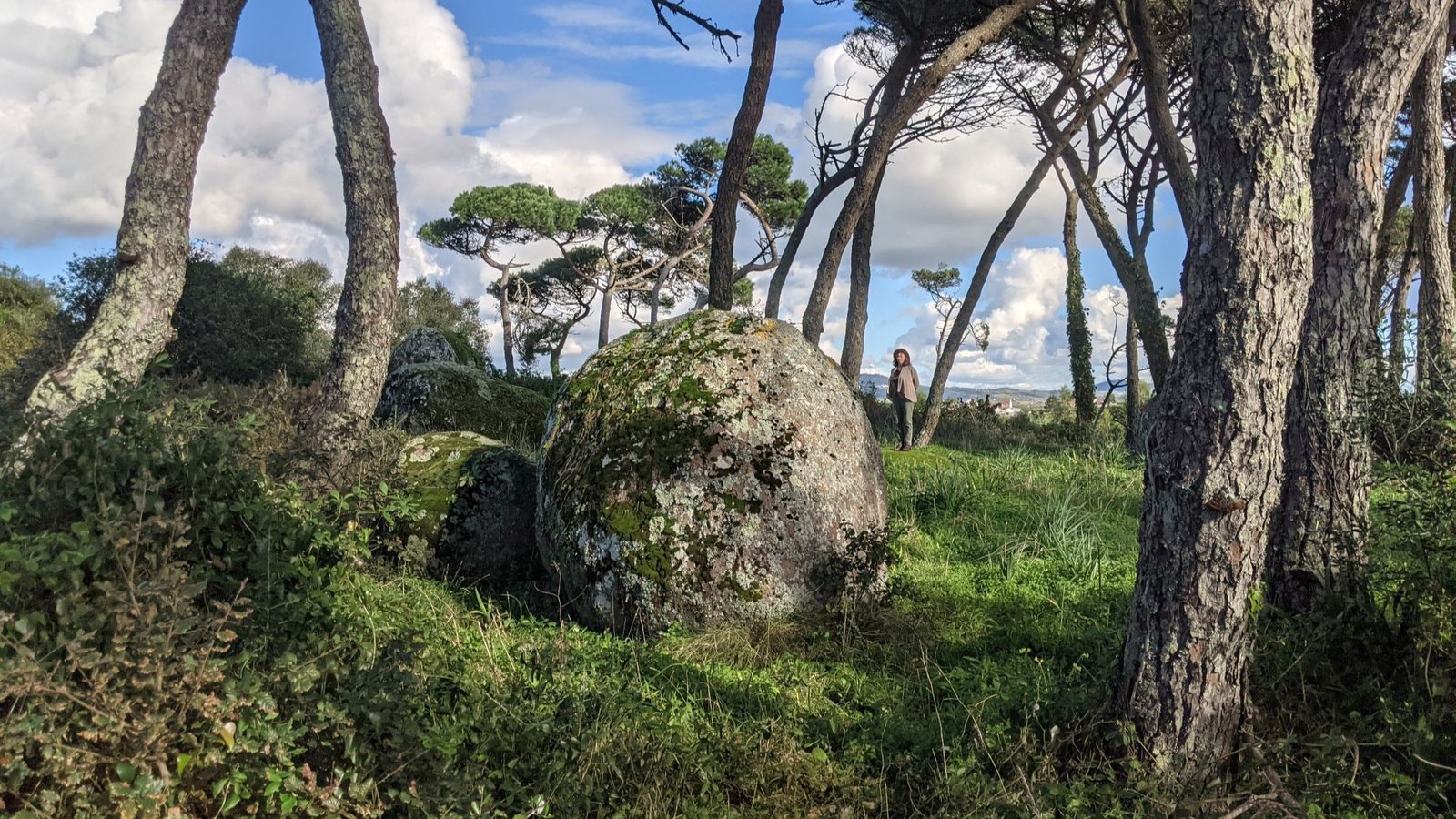
Pingback:Praia das Maçãs Prehistoric Monument - Prehistoric Portugal